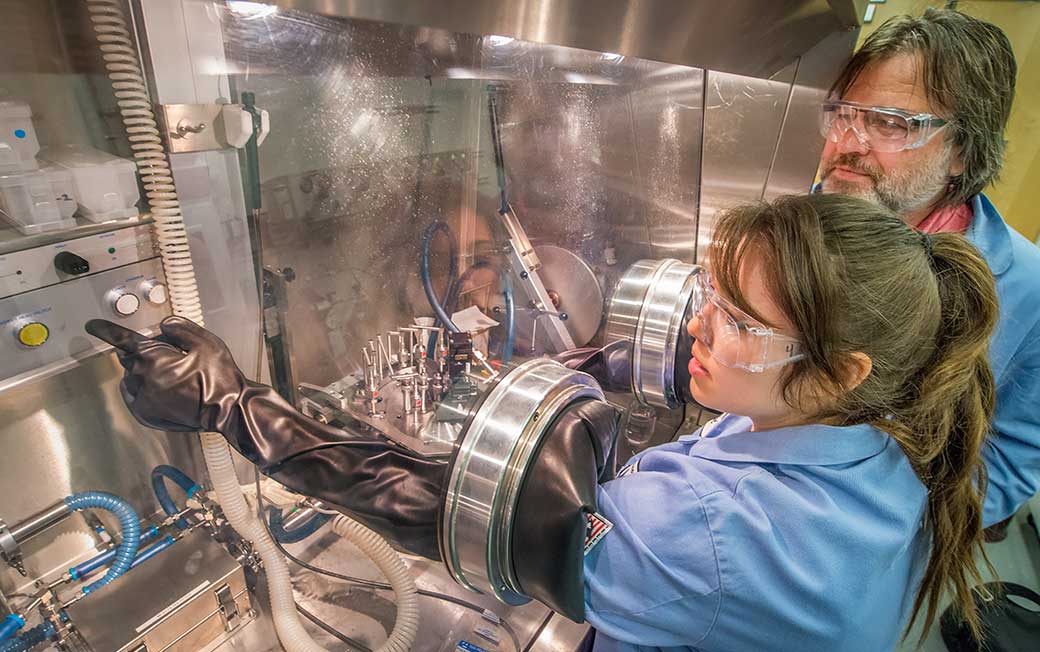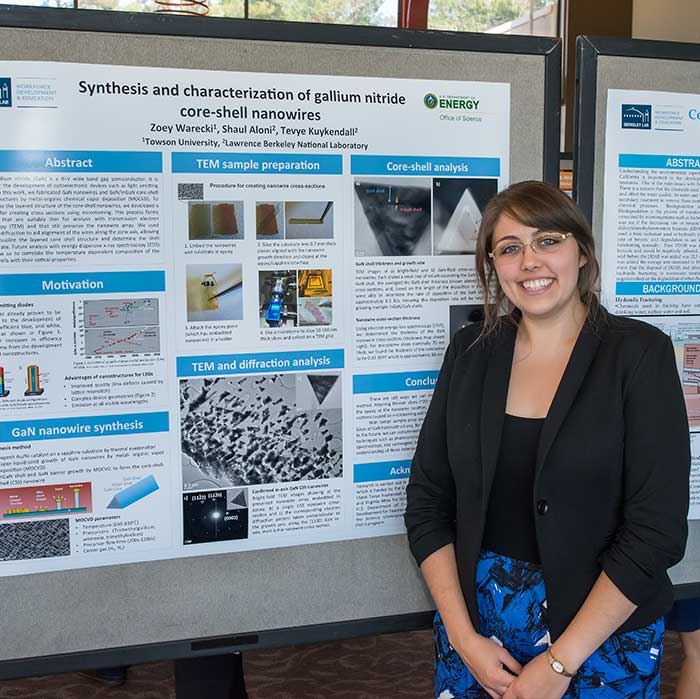Zoey Warecki '14 wins 2016 NSF graduate research fellowship
Towson University alumna Zoey Warecki received a 2016 National Science Foundation (NSF) graduate research fellowship.
By Megan Bradshaw on June 14, 2016

Jess & Mildred Fisher College of Science and Mathematics alumna Zoey Warecki received a 2016 National Science Foundation (NSF) graduate research fellowship.
As a physics major, Warecki worked with Rajeswari Kolagani, Ph.D., in the Materials Lab researching the electrical properties of calcium manganese oxide thin films. Warecki had high praise for Kolagani and the Department of Physics, Astronomy and Geology (PAGs) faculty.
"I would not have gotten anywhere without the faculty and staff in the Towson physics department," she said. "Every single person in the PAGs department cares about the students and wants them to succeed. Not only wants them to succeed but helps them succeed. I will always be thankful for my years spent on the fourth floor of Smith."
Kolagani returned the compliment when asked about Warecki.
“NSF graduate research fellowships are highly competitive,” she said. “It’s rather unusual for someone even to apply for it in their first semester of Ph.D. admission [like Warecki]. She has always been an amazing student.”

For the 2016 competition, NSF received close to 17,000 applications, and made 2,000 award offers.
Warecki is pursuing her Ph.D. in materials science and engineering at University of Maryland, College Park. Her proposed research is to study battery electrochemistry and understand degradation/failure mechanisms on the nanoscale by using a powerful technique known as in-situ transmission electron microscopy (TEM).
"This is a very challenging technique in which you conduct real-time experiments inside of a TEM where, keep in mind, the sample must be electron transparent, i.e. on the order of 10s-100s of nanometers, to be able to view it with the microscope," she noted. "Obviously there is a lot of hard work to be done- and lots to learn!- and I’m excited for what challenges I’ll face over the next few years."
Fellows benefit from a three-year annual stipend of $34,000 along with a $12,000 cost of education allowance for tuition and fees (paid to the institution), opportunities for international research and professional development, and the freedom to conduct their own research at any accredited U.S. institution of graduate education they choose.